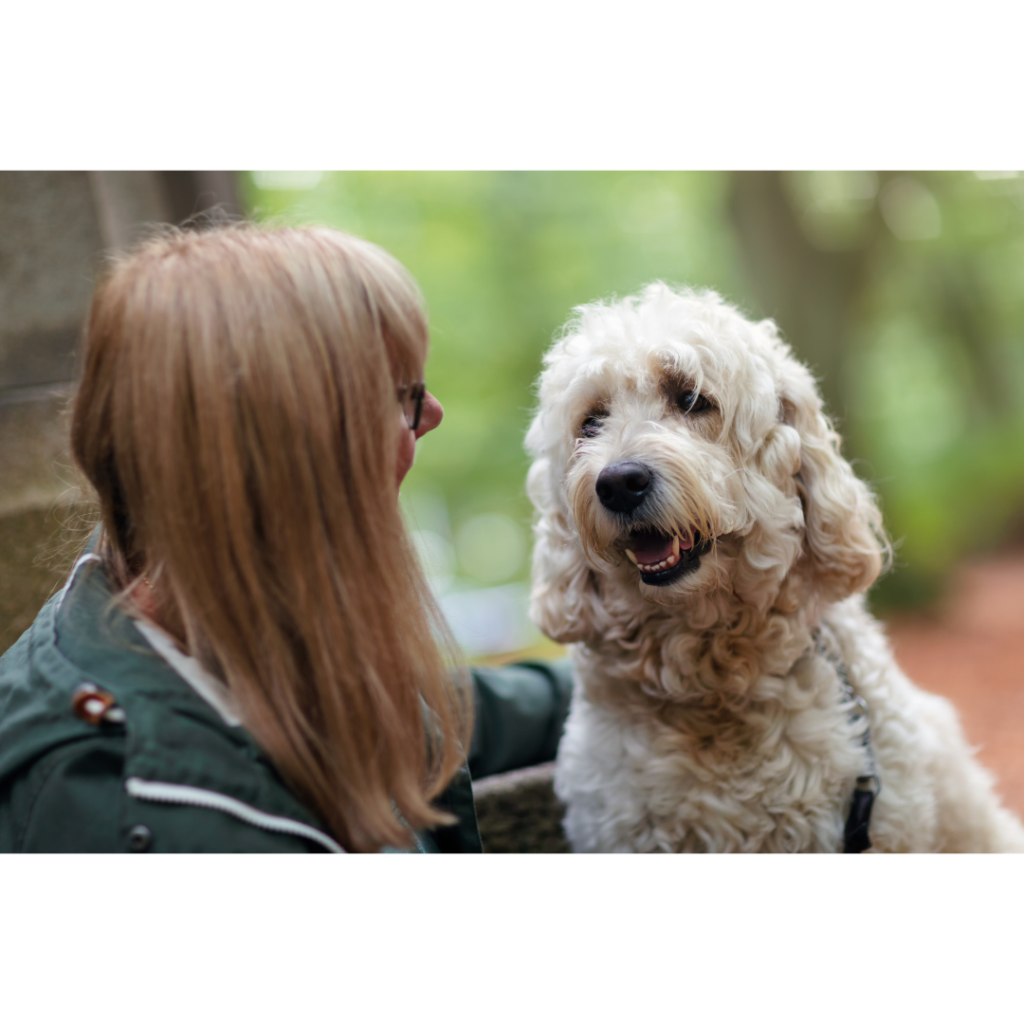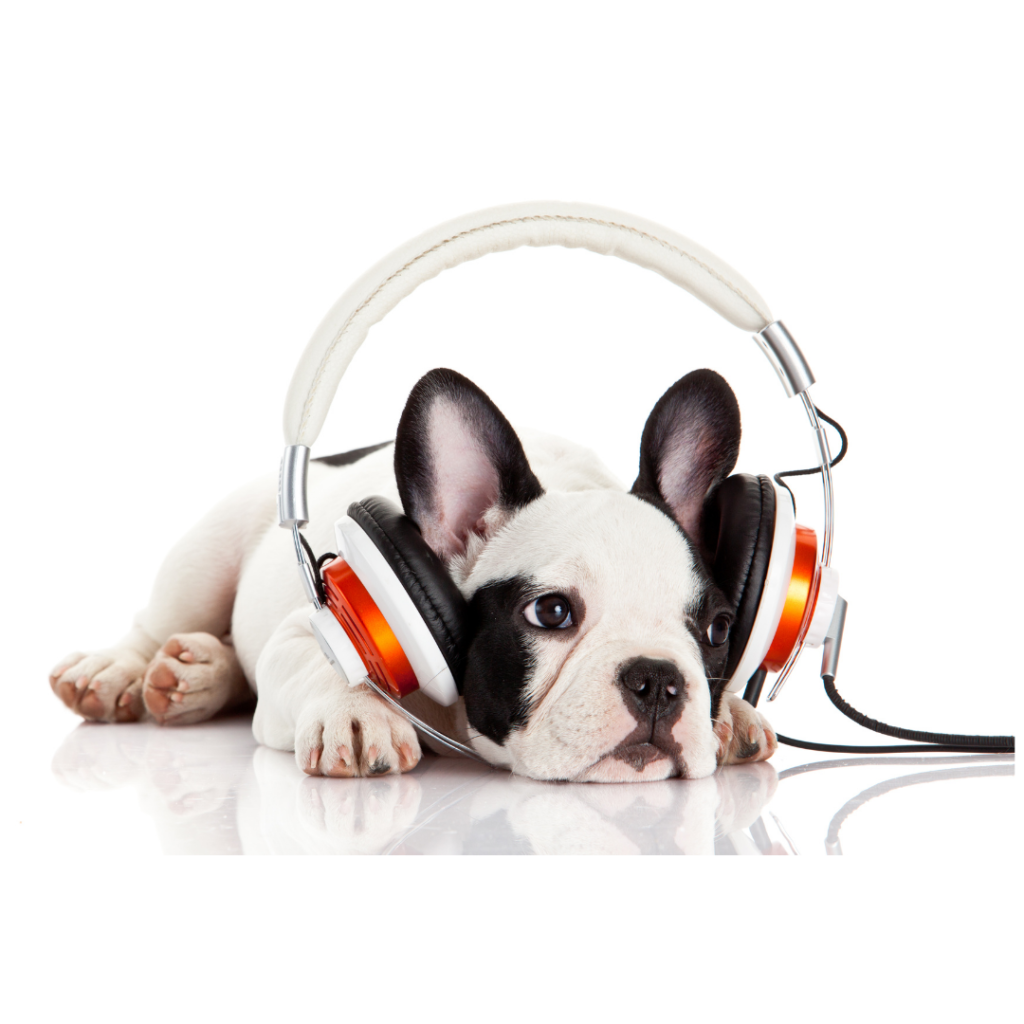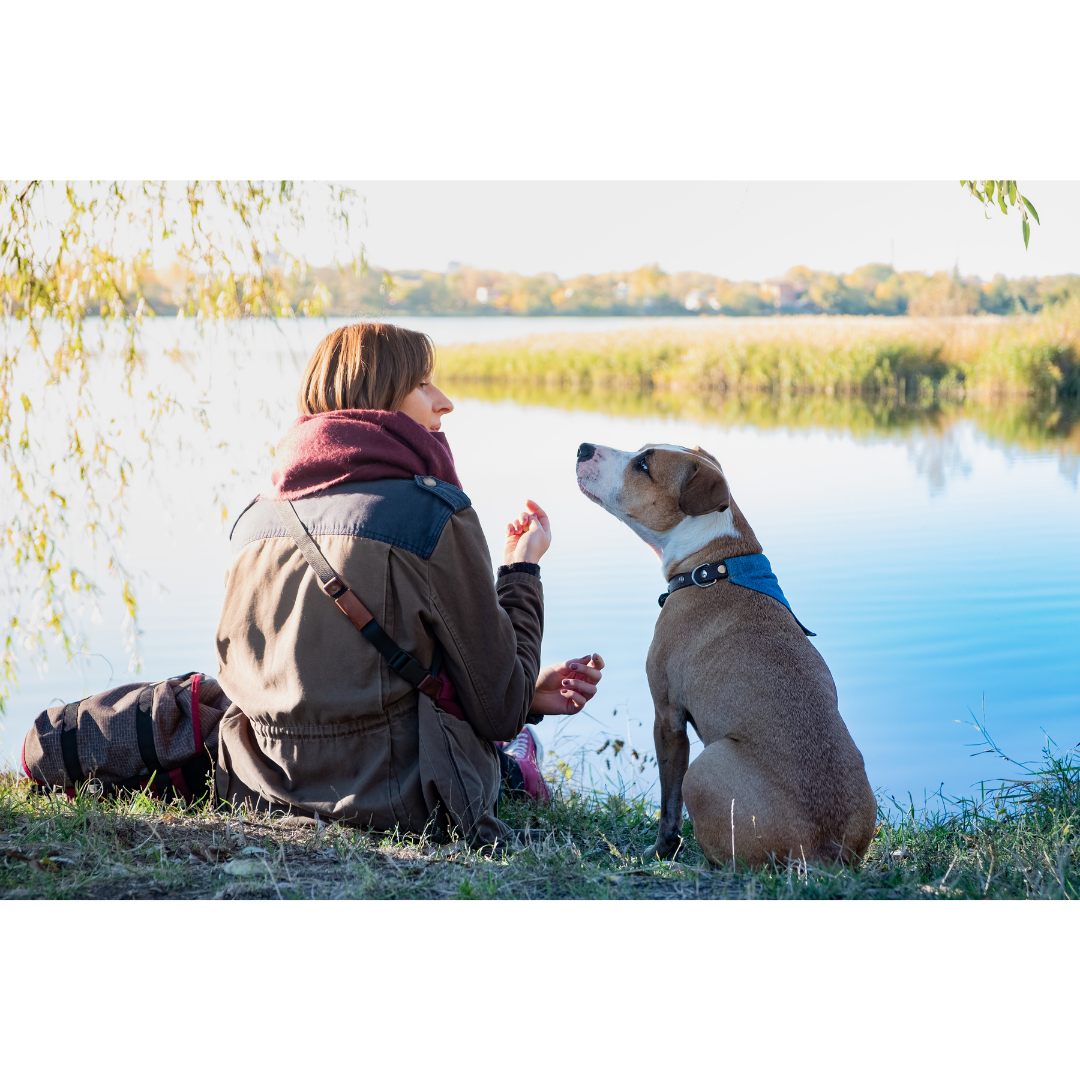Humans and dogs have literally evolved together for thousands of years. It’s amazing if you consider the tight bonds we can form with dogs when we do not even “speak” the same language.
Dogs can sense our moods and energy. They watch us closely. Isn’t it time that you learned how your dog wants you to communicate with them?
These tips for better communication with your dog will help prevent frustration for both of you!
If you’re trying to teach your dog a new skill or behaviour, pay attention to these tips!

1. Drop the extra banter
Have you ever received a one word text? It’s hard not to read them as angry!!
For humans, a one word sentence feels harsh and abrupt.
To a dog however, one word commands are clear and desirable!
You might think you’re being friendly when you say:
“Hi Fifi. What a good girl. Sit Fifi! Sit for mom!” but that word salad can be confusing for your dog. When Fifi does not sit (because there were too many words around the request and she didn’t notice the “sit”) you might get frustrated, and Fifi won’t understand why your mood changed.
If you’re asking your dog for something, keep the request short!
“Fifi, sit” is perfect, and will prevent confusion!
Better communication with your dog starts with less words!
2. Match your tone and speed to what you want
Have you ever heard the saying “It’s not what you say, but how you say it”?
This is true for communicating with dogs as well!
Dogs will pick up on your tone and pace of speech a lot more than they will the actual words themselves. Match your tone & speed to your desired outcome!
For some people this is natural, for others it takes some practice.
If you’re trying to settle a hyper puppy, use a slow calm voice rather than high-pitch fast-paced talk.
If training your dog recall make yourself the most fun person in the room so your dog gets excited to come back to you! Saying “Rover, here!” in an excited high-pitch voice like a little girl that just found out she’s going to Disneyland will be MUCH more effective than saying “Rover, here” in a boring or angry voice.
A basic rule is that if you’re asking for a higher energy behaviour, use a faster & more exciting voice and tone. If you’re asking for a lower energy behavior (such as “Stay”) say the words slower and more deeply.

3. Choose your environment wisely
Do you find it more difficult to read if the tv is on?
Dogs get distracted too!
One of the biggest mistakes I see when people are trying to teach their dog a new skill is not choosing the location wisely. If you get distracted, why wouldn’t your dog?
Whenever you’re starting to train a new command choose a quiet, calm location so that your dog can focus on the task. For this reason I start almost all dog training at home where there’s minimal distractions!
Let your dog learn the skill in a quiet setting, THEN take it out into the real world.
4. Use a marker word
How many variations of “Good dog!” do you use? Do you really think your dog knows what they all mean?
As mentioned above, dogs pick up on tone so yes, they can tell you’re happy with them when you say “Good dog!” enthusiastically. That doesn’t necessarily mean they link the enthusiasm with your former request however. The big problem with this? If they don’t know what they did correctly then they won’t know to repeat it!
For this reason I’m a HUGE fan of using a marker word such as “Yes” during training.
A marker word communicates the exact moment your dog has done something you liked and want repeated. For example, when training “sit” you would say “Yes” the second their butt touches the ground, then reward them with a treat. This can make dog training much faster & easier for both you and your dog!
To learn how to use a marker word, read this.
Using a consistent term your dog recognizes can lead to better communication with your dog!
5. Add hand or body gestures
Dogs are experts at reading body language since that’s how they communicate with other dogs! Every aspect of them from their eyes to their tail tells the other dog how they’re feeling. Lip licking? Bit stressed. Soft eyes? Come in closer. Growl? Back off.
I love coupling hand and body gestures with verbal cues during training since your dog will be trying to read your body language anyhow!
Dogs vision is different than ours (more peripheral, better at night, not as much colour differentiation, more motion sensitive) so this should be factored into our gesture creation.
For example, your dog may not be able to tell which specific finger you’re holding up, but they can easily learn that a hand lowering through the air means “Lie down“.
It’s better to use larger physical movements (with good variation between gestures) than fine hand movements.

Better communication with your dog will result in less frustration for both of you!
You love your dog and they love you. You’ll be communicating with each other constantly over the years, so it’s time to add some intentionality to how you communicate!
Everyone wants to be understood. Make sure you’re communicating in a language they understand!
Happy training 🙂
Disclosure: Happy Hounds uses affiliate links. Purchasing with these links will not cost you any extra, but I get commissions for purchases made through these links. Affiliate links help me to continue to offer free resources & blog posts. I would love if you used them!


Im very pleased to find this site. I need to to thank you for ones time for this particularly fantastic read!! I definitely really liked every part of it and I have you bookmarked to see new information on your site.
Thank you so much for the kind words! 🙂